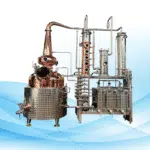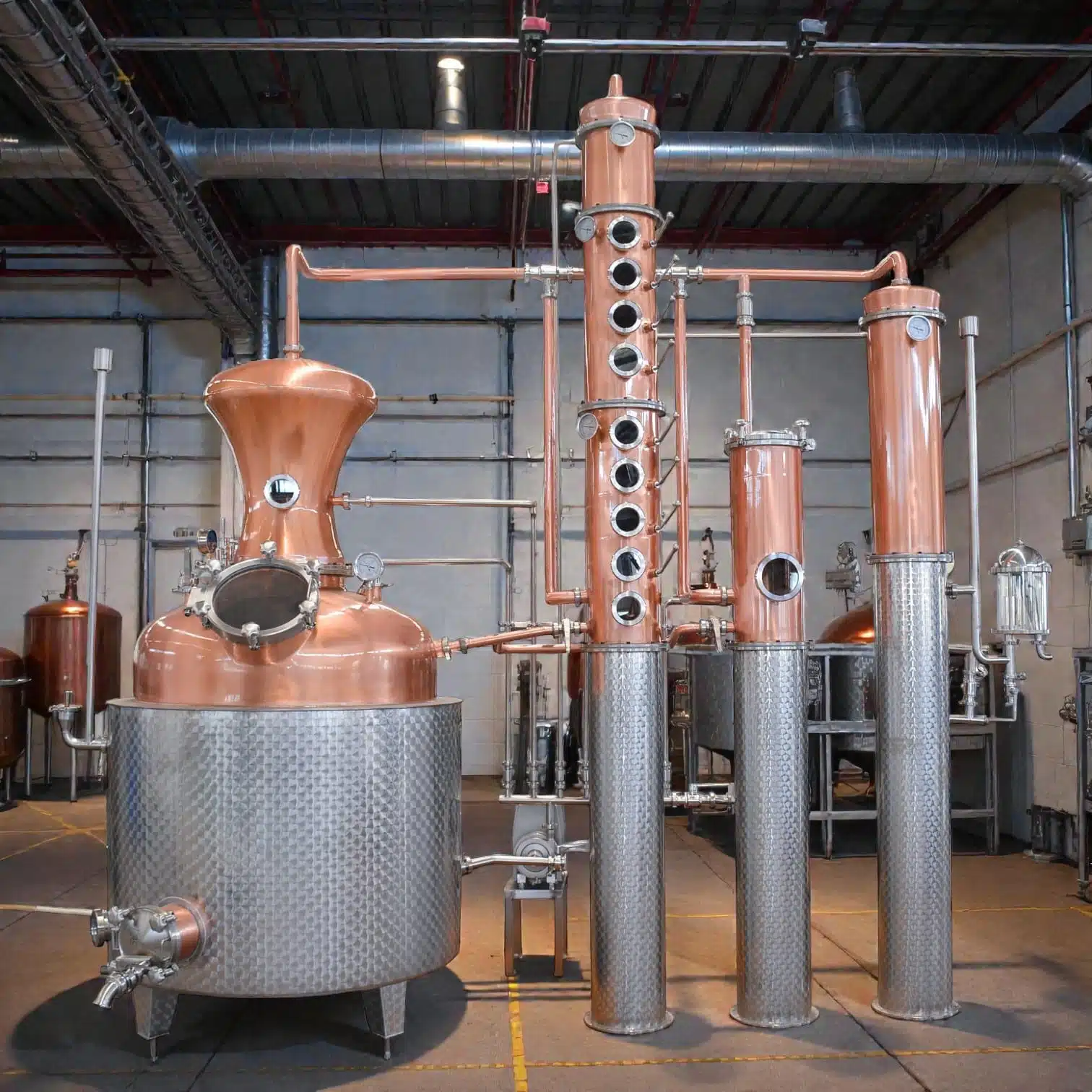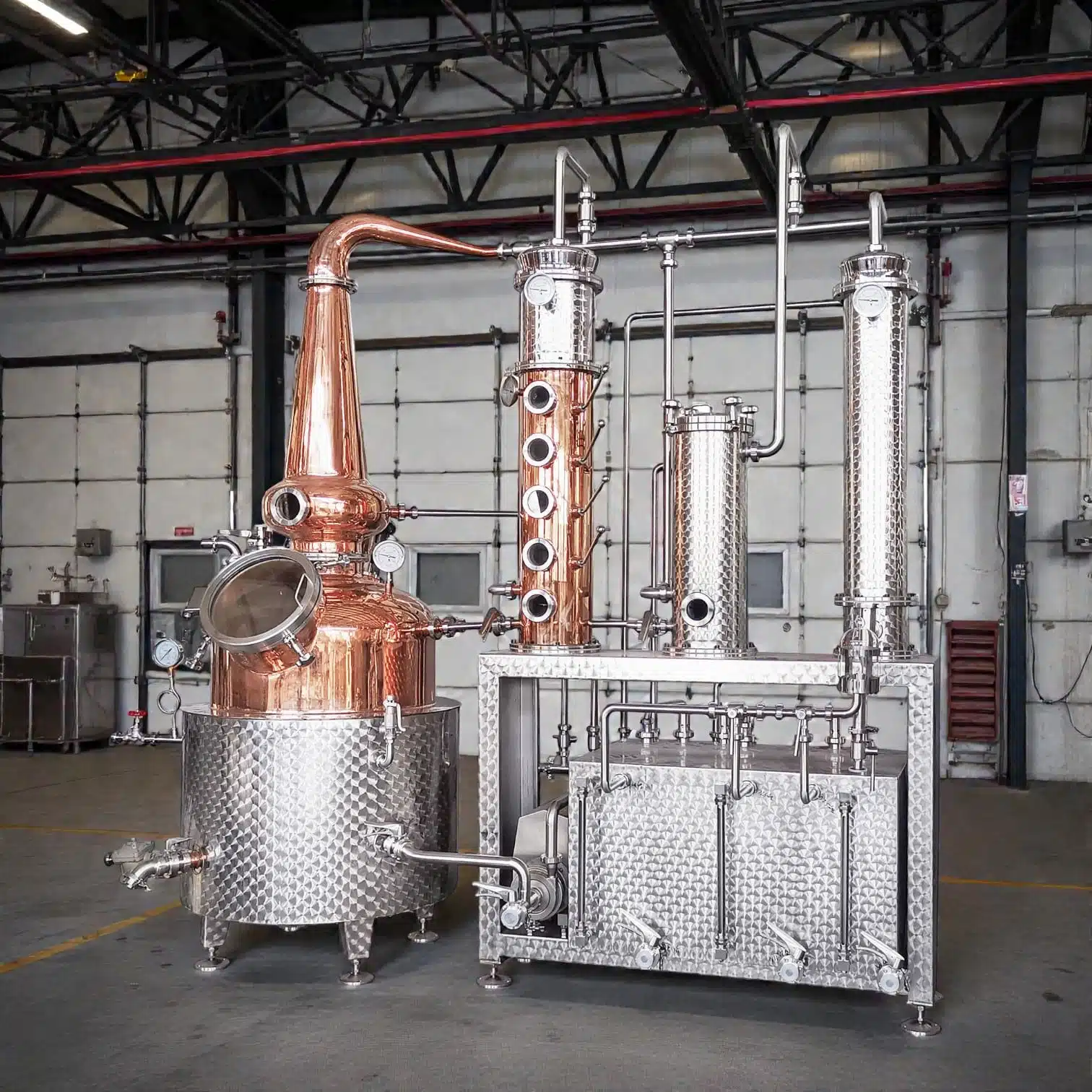A Guide to Fermentation Tanks in Brewing Equipment.
Apart from isomerization processes and maturation, fermentation is completed in these specialized vessels called fermentation tanks. In this primer, we will focus on fermentation tanks; their classifications, the fermentation process and important considerations that assist in the selection of a fermentation tank.
What is a Fermenter?

A fermenter, commonly referred to as a fermenter tank, is one of the key apparatus of brewing where yeast will turn sugar into alcohol, thus creating the taste and glass of the beer. These vessels are made in such a way as to ensure yeast’s optimal growth in terms of temperature and pressure. Different tanks serve varied functions and offer specific advantages depending on the brewing style.
Types of Fermentation Tanks
There are a number of devices that brewers can use in the fermentation process, each suited for varying brewing techniques and providing a range of advantages:
Open Fermentation Tanks
Commonly used in brewing processes that are not very complex, open tanks are easily accessible and allow for the cause to be inside and under observation, however, they require a lot of work to ensure that they don’t get contaminated.
Closed Fermentation Tanks
These types of tanks are in place in an enclosed environment, which is great if you aim to regulate the pressure in it, but can cause some exposure to foreign contaminants.
Conical Fermentation Tanks
Conical tanks are quite famous amongst commercial brewers since their design slightly comes in a triangle form making them easier to pour out yeast, hence making them effective for the several brewing cycles.
Unitanks
Unitank are made to serve a wide number of purposes since they work in pairs, with each of them carrying out a particular operation that is certain to take place in the other one at a smaller scale, thus being cost-effective and saving room in smaller breweries.
Cylindrical Tanks
Cylindrical tanks are most often utilized in larger breweries as they are very sturdy and assist in temperature consistency across the tank, which aids in mass production.
Fermentation In A Fermenter
A fermenter performs a number of steps in a procedure that is crucial to the fermentation process, which consist of:
Charging
The process of charging is when the fermenter is filled with wort. Wort is the liquid that is rich in sugars from malt and not fermented. At this step, wort is introduced into the fermenter and marks the starting point of fermentation.
Inoculating Yeast
During the inoculation stage of alcohol production, yeast is introduced into the wort. At this point, yeast is important as it is the catalyst that converts sugars into alcohol, CO2, and other flavor enhancing components that contribute to the taste of the beer.
The Fermentation Process
Once we add yeast, the process of fermentation starts to begin. The sugars in the wort are transformed into beer in the coming days by yeast. This phase can be broken down into parts:
- Lag Phase: The first phase is when yeast slowly starts to get used to its new environment.
- Growth Phase: The second phase is marked by rapid multiplication of yeast.
- Fermentation Phase: The third phase is when yeast starts feeding on glucose and produces alcohol and CO2.
- Conditioning Phase: After alcohol has been produced, beer in this phase gets aged, which enhances the final taste of the beer.
Fermentation Completion Treatment
Once the time for fermentation has been reached, the beer gets conditioned and other treatments are performed to ensure high quality of the beer. This can include chilling the beer to force out the remaining yeast and any small sediments, improving clarity through filtration, and carbonation if needed.
Sampling and Quality Control
Sampling during the entire cycle is responsible to control the strength of the beer and to ensure the flavor is well-balanced. Safety and quality of the beer is controlled at all times through the use of control checks, so they are acceptable in every brewing cycle.
Choosing the Right Fermentation Tanks
Selecting the appropriate fermentation tanks for brewing purposes requires one to consider the production size or scale, costs, and the objectives of the brewing process.
Tank Material
Fermenting tanks are mostly constructed from stainless steel because it lasts, is easy to maintain, and is rust resistant. While some brewers utilize plastic or glass, stainless steel proves to be cleaner and more effective.
Fermentation Tank Size
Bear in mind your brewing size when choosing a tank. Smaller craft breweries would want smaller tanks for their odd seasonal batches, and larger breweries require tanks that can sustain a large quantity of brewing.
Shape and Design
Tanks are meant to control the positioning of yeast, yeast has an active role during flavor creation. For bulk brewing, the conical shape is most ideal as it makes it possible to remove yeast easily, cylindrical tanks are for breweries that do not have enough space.
Pressure Rating
When you brew lagers or other more carbonaceous beer types that require pressurization, one crucial specification you also have to look at is the tank’s pressure rating. If carbonation is critical in your brewing process, select tanks that are rated for higher pressures.
Other Features
More features may also enhance the capability and operability of the tank. These include:
- Cooling Jackets to regulate temperature effects
- Sampling Valves for maintanance of target quality
- Racking Arms for movement of beer while sediment is left undisturbed
- Insulation so that fermentation was done at the desired temperature
Demand Trends for Fermenters
As the craft beer market expands rapidly, the need for increasingly functional and specialized fermentation tanks has increased. In today’s market, brewers are really looking for a specific type of tanks that have better automation control features, energy-efficient technology as well as compact design.
The philosophy of green brewing is also sparking the growth of interest in energy-saving tanks with optimal temperature parameters for materials of brewing mixtures while using the minimum amount of power. The ongoing trend of national expansion is pushing the demand for new tank production technologies to increase efficiency and enable the production of quality products for a growing number of people.
FAQ
What material are fermentation tanks made of?
The main reason why the majority of the fermentation tanks constructed are made out of stainless steel is because it’s strong, it’s not going to rust, as well it’s more hygienic.
What purpose do Conical fermentation vessels serve?
Conical fermentation vessels are in demand due to their shape as this facilitates proper yeast harvesting, eases cleaning, and enables the tanks to be utilized for several fermentation cycles.
Is it possible to use one tank for both the fermentation and conditioning processes?
Yes, unitanks allow for two processes to be done in one tank, thus saving space and reducing costs, as both fermentation and conditioning can be carried out in it.
What do you consider is the most suitable temperature for fermentation of beers?
For most ales during ale fermentation, the temperature range used is between 60–75 degrees Fahrenheit (15-24 degree Celsius) and for lagers the average temperature maintained is around 45-55 degrees Fahrenheit (7-13 degrees Celsius).
To manage the temperature of the environment and yeast, what Type of cooling system is needed?
The majority of tanks usually require cooling because temperature control is very important since it’ll enable yeast to perform effectively and uniformity in the quality of the beer to be achieved.
What are some of the best practices to maintain the sterility and functionality of the fermentation tank?
Keeping it clean, inspecting regularly, maintaining the correct temperature during use and pressure ranges opens opportunities to keep the tank in a certain condition and extend its life.
Why Choose Us
Our equipment is carefully created to enable the brewers to brew with ease and perfection. We pride ourselves in providing top class fermentation tanks, manufactured to meet the highest standards of quality due to our vast experience in crafting fermentation tanks. We have a variety of tanks designed for small specialty brew to larger beer production breweries. Our tanks will assure to provide additional value to your brewing and improve the properties of beer in terms of flavor, consistency and characteristics of variety.
















